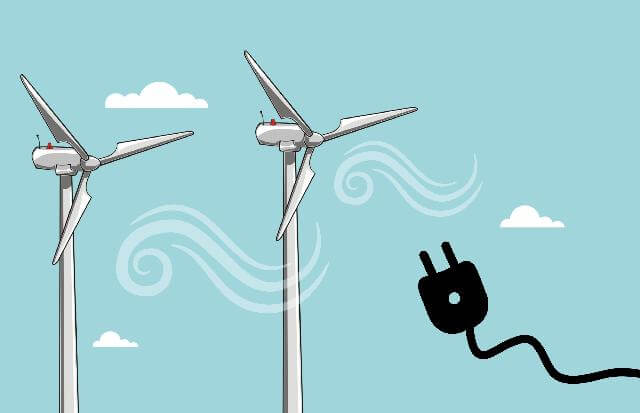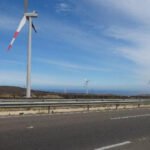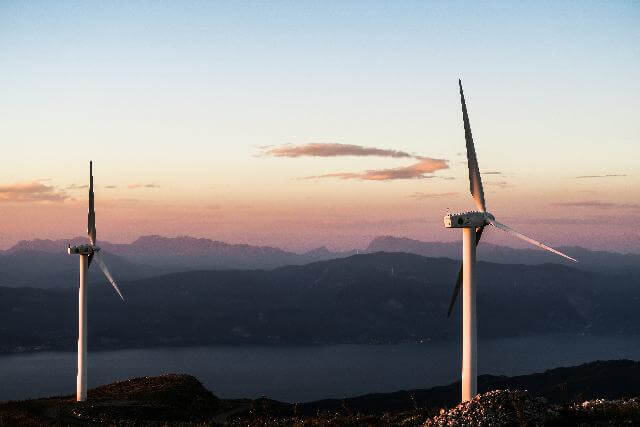The main function of a wind turbine generator is to transform the kinetic energy captured by the wind turbine blades into electrical energy.
Most wind turbines are equipped with an induction or asynchronous generator for this purpose.
The reasons for this will be discussed below.
But first, let’s go over a basic definition of what an induction generator is, as well as an explanation of how they work.
What is an induction generator?
Interestingly, induction generators were originally designed as electric motors.
However, it so happens that when an induction motor is connected to a source of mechanical power, such as a wind turbine, and is driven over its synchronous speed, it can also be used to generate electricity.
In other words, induction machines can convert electrical energy into mechanical energy and vice versa.
How do induction generators work?
Generators work by using the phenomenon of electromagnetic induction to generate electricity.
In the form of an electrical current, electromagnetic induction occurs when a conductor, such as a coil of wire is placed inside a changing magnetic field.
To explain how this happens, we first need to better understand the two main components in an asynchronous generator: the rotor and the stator.
- The rotor is the moving part of an electromagnetic circuit. In an induction generator, the rotor resembles a hollow cylinder. It usually consists of an aluminum ring at both ends, which are joined together by several copper or aluminum bars. For this reason, induction generator rotors are commonly referred to as “cage” rotors.
- The stator is the stationary part of an electromagnetic circuit that is connected to the electrical grid. It contains both the rotor and a set of armature coils that encircle the rotor.
Now that we have a basic understanding of a rotor and a stator, let’s move on to how they generate electricity in an induction generator:
1. The stator is supplied with an electrical current which generates a magnetic field inside the armature coils. At this stage, the generator operates as a motor and starts to drag the rotor behind it.
2. Once the rotor begins to turn more due to the kinetic energy from the blades of a wind turbine, the magnetic field inside the stator also starts to rotate. When this occurs, the speed of the induction motor is slightly slower than the synchronous speed of the magnetic field inside the stator.
3. This rotating magnetic field results in an alternating electromagnetic force (EMF) inside the armature coils
4. The fluctuating magnetic field disturbs the electrons inside the coils, causing them to switch directions continually. At this point, the machine starts to run faster than the synchronous speed of the magnetic field and begins to generate electricity.
Another term for the movement of electrons is alternating current (AC), which is the type of electric current that usually supplies the utility grid.
5. Finally, the armature coils carry the alternating current to the grid, which gets distributed through transmission lines to the electrical outlets in buildings.
Reasons why induction generators are used in wind turbines
- Asynchronous generators are top-rated in wind turbines because they are typically cheaper than other types of generators.
- Induction generators are much more reliable and require a lot less maintenance. This makes them a very practical option for wind turbines since the generator is housed inside the nacelle, which sits on top of the wind turbine tower at around 70 meters in the air, making it difficult to access.
- Another advantage of an induction generator is that its speed varies according to the amount of mechanical power that is applied to it. In other words, the speed at which the generator rotor turns is relative to wind speed, which puts less strain on the gearbox.
Conclusion
In this article, we provided a simple definition of an induction generator, as well as a brief explanation of how they work.
We also explained that induction or asynchronous generators are often used in wind turbines because they are more cost-effective, reliable, and efficient than other types of generators.
References:
Asynchronous (Induction) Generators. [online] Available at: <http://drømstørre.dk/wp-content/wind/miller/windpower%20web/en/tour/wtrb/async.htm> [Accessed 30 September 2021].
How a Wind Turbine Works – Text Version. [online] Available at: <https://www.energy.gov/eere/wind/how-wind-turbine-works-text-version> [Accessed 30 September 2021].
What is an Induction Generator? (Working Principle with Diagram) | Linquip. [online] Available at: <https://www.linquip.com/blog/what-is-an-induction-generator/> [Accessed 30 September 2021].






